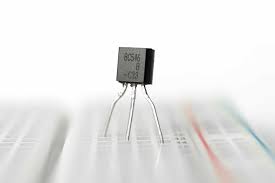
One important factor that differentiates the types of electronic components from each other is that they are either passive or active.
Active electronic components are those that can control the flow of electricity. Different Types of Printed Circuit Boards have at least one active component. Some examples of active electronic components are transistors, vacuum tubes, silicon-controlled rectifiers. They can manipulate the flow of electricity in some way.
Examples of
active electronic components:
Transistor: Mostly used for amplifying electrical signals or
as switching devices
Diode: Permits electricity to flow in one direction only
Integrated circuit (chips or microchips): multiple complexes
circuits on a circuit board; used to perform all kinds of tasks; still
considered a component despite consisting of many other components
Display devices such as LCD, LED, and CRT displays
Power sources such as batteries and other sources of alternating
current (AC) or direct current (DC)
Passive components can influence
the flow of electricity running through them. For example, they can resist its
flow, store energy for later use or produce inductance. However, they cannot
control or amplify electricity themselves.
The most common components and their functions:
Resistor: Resists the flow of electrical current in a
circuit; used to lower voltage
Capacitor: Stores electrical energy electrostatically in an
electric field (known as ‘charging’), and can release it later when needed
Inductor: Stores electrical energy in a magnetic field;
allows direct current (DC) to flow through it, but not alternating current (AC)
Transducer: Converts an input signal from one type of energy into another type; sensors are a type of transducer that converts physical action/input into an electrical signal.
Difference Between Active and Passive Components
1. Active components are those that deliver or produce energy or power in the form of a voltage or current. Passive components are those that utilize or store energy in the form of voltage or current.
2. Examples of the active components are diodes, transistors, SCR, integrated circuits, etc. similarly, examples of the passive components are resistor, capacitor, and inductor.
3. Active components are capable of providing the power gain, whereas passive components are not capable of providing the power gain.
4. Active components can control the flow of current, but passive components cannot control the flow of the current.
5. Active components are energy donors, whereas passive components are energy acceptors.
6. The active component does not require an external source for the operation, whereas the passive components require any external source for the operation.
Click
here to read more about electronic components.
 Share
Share